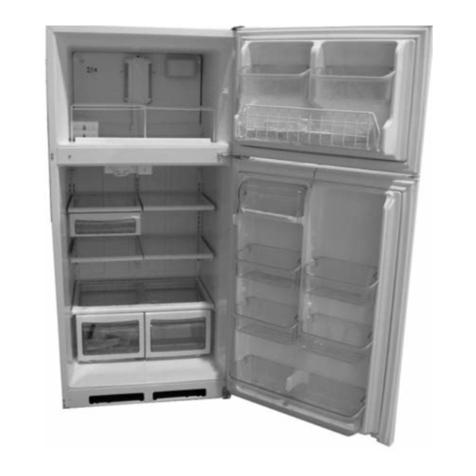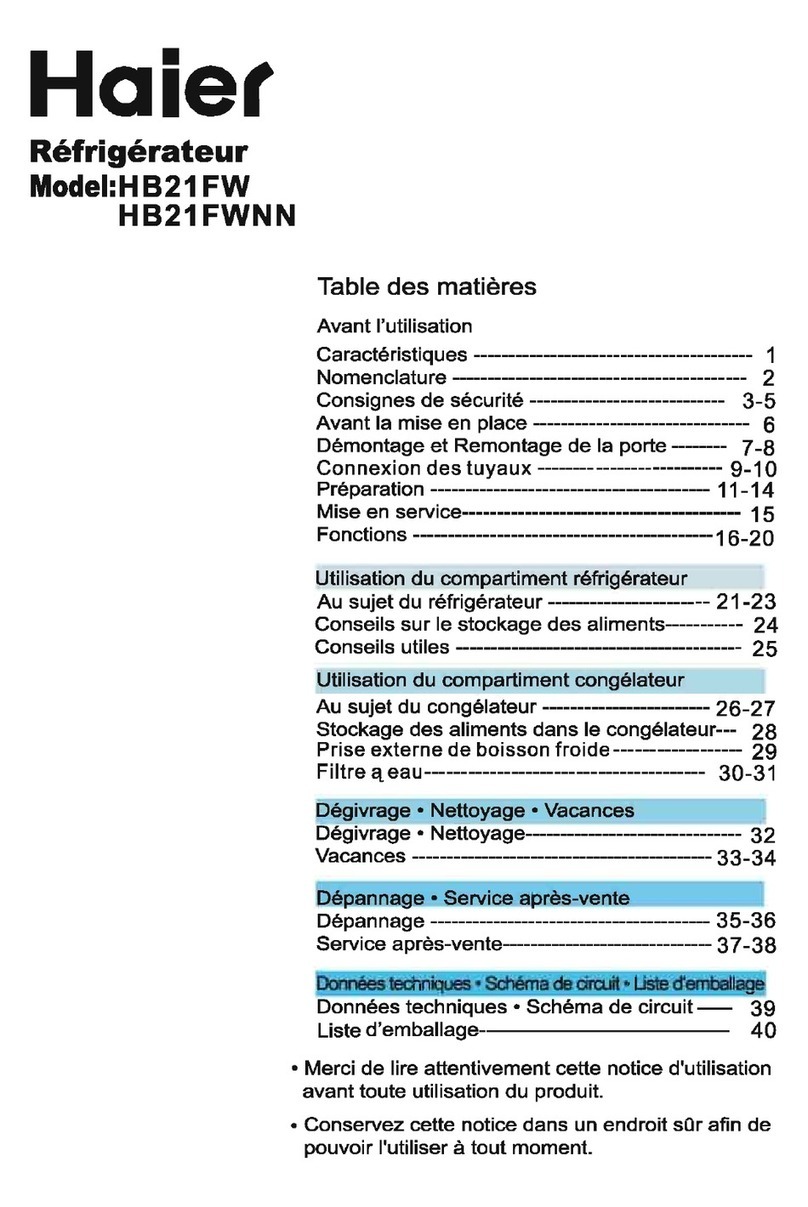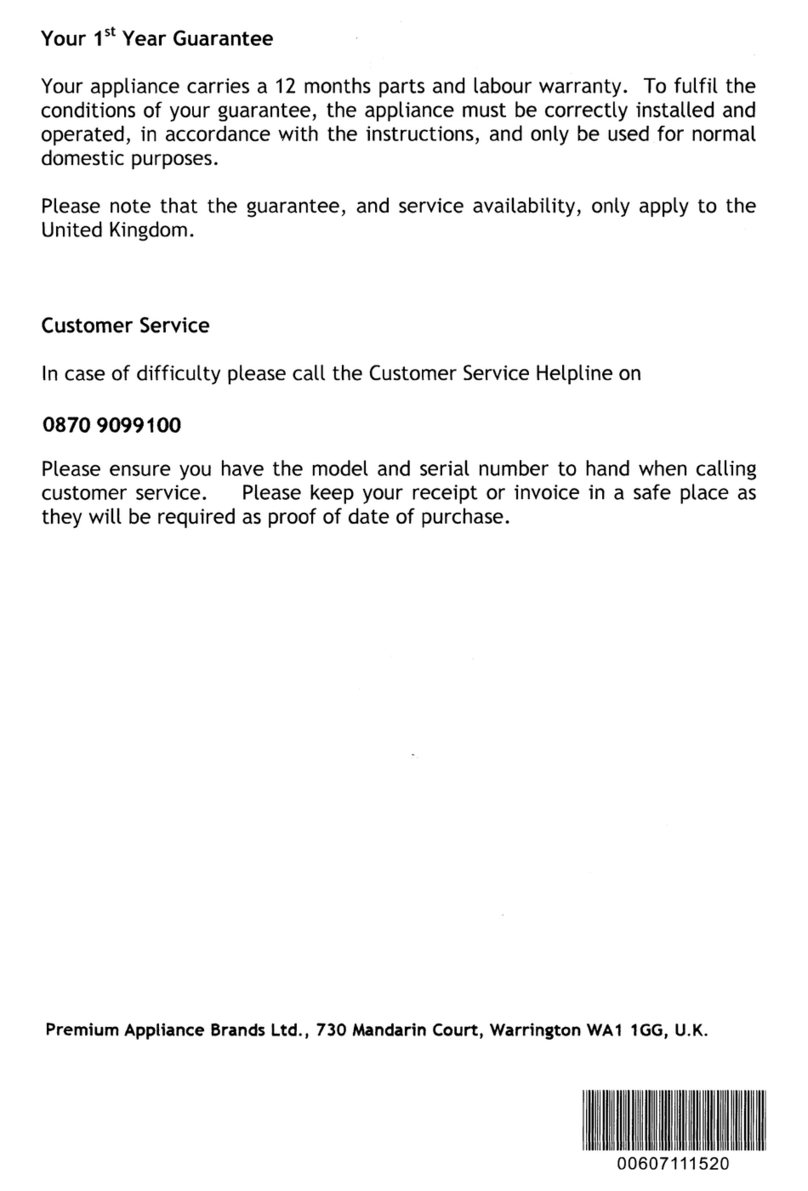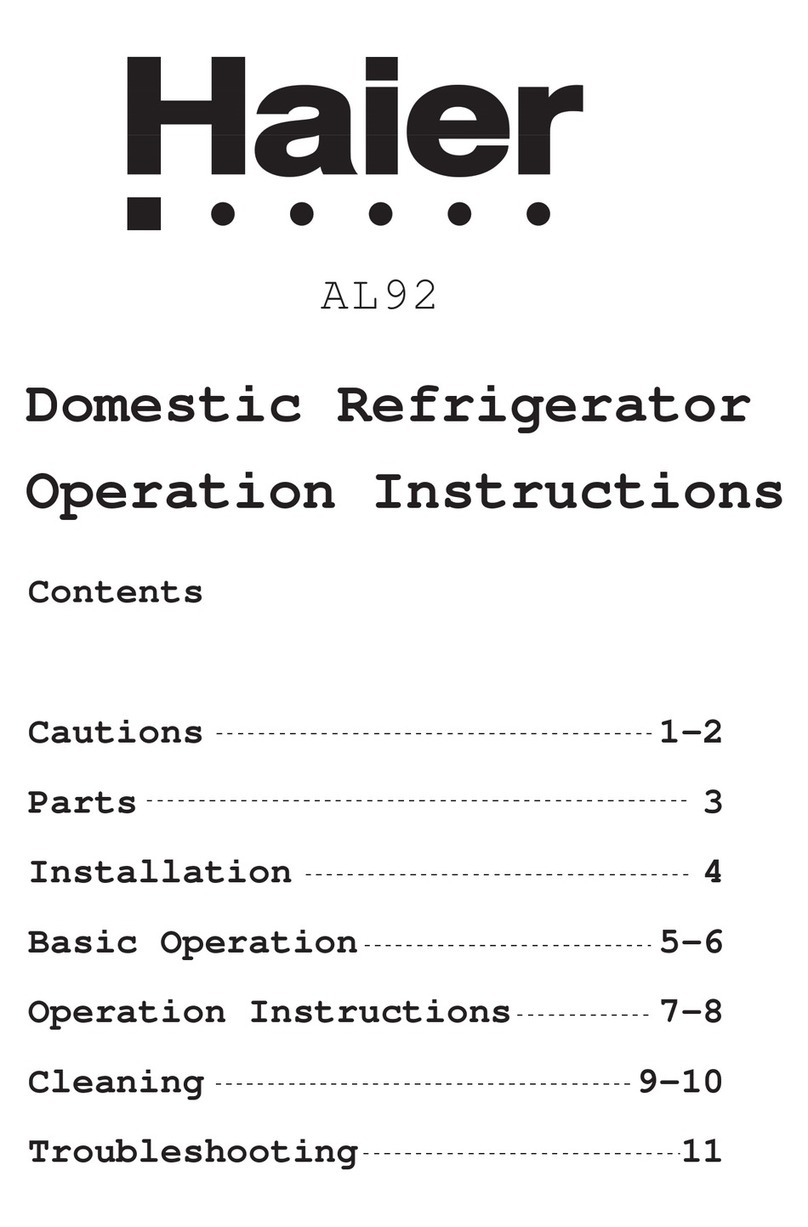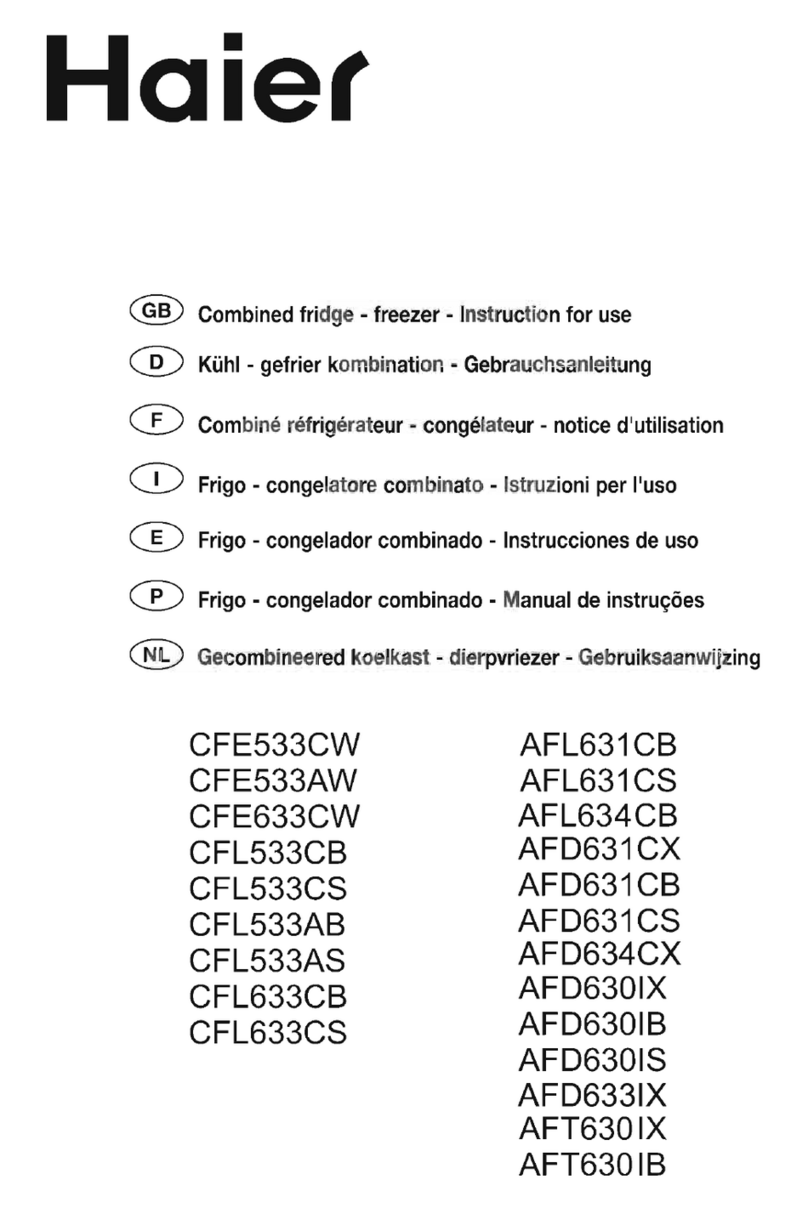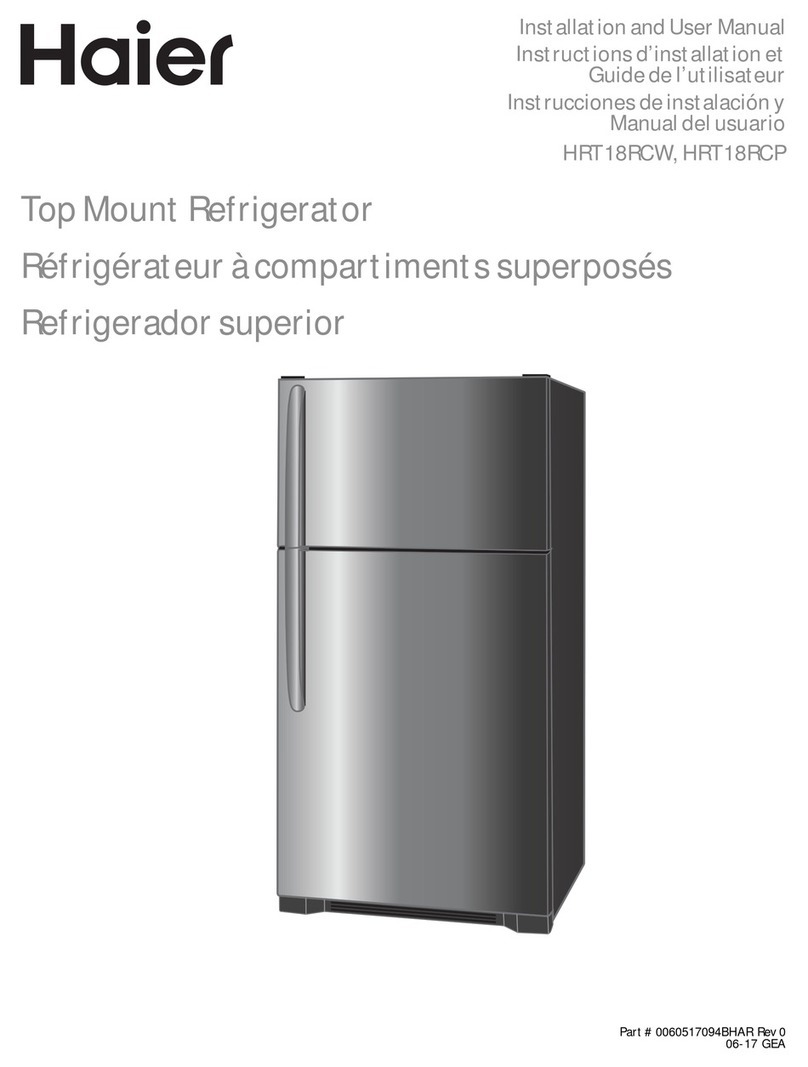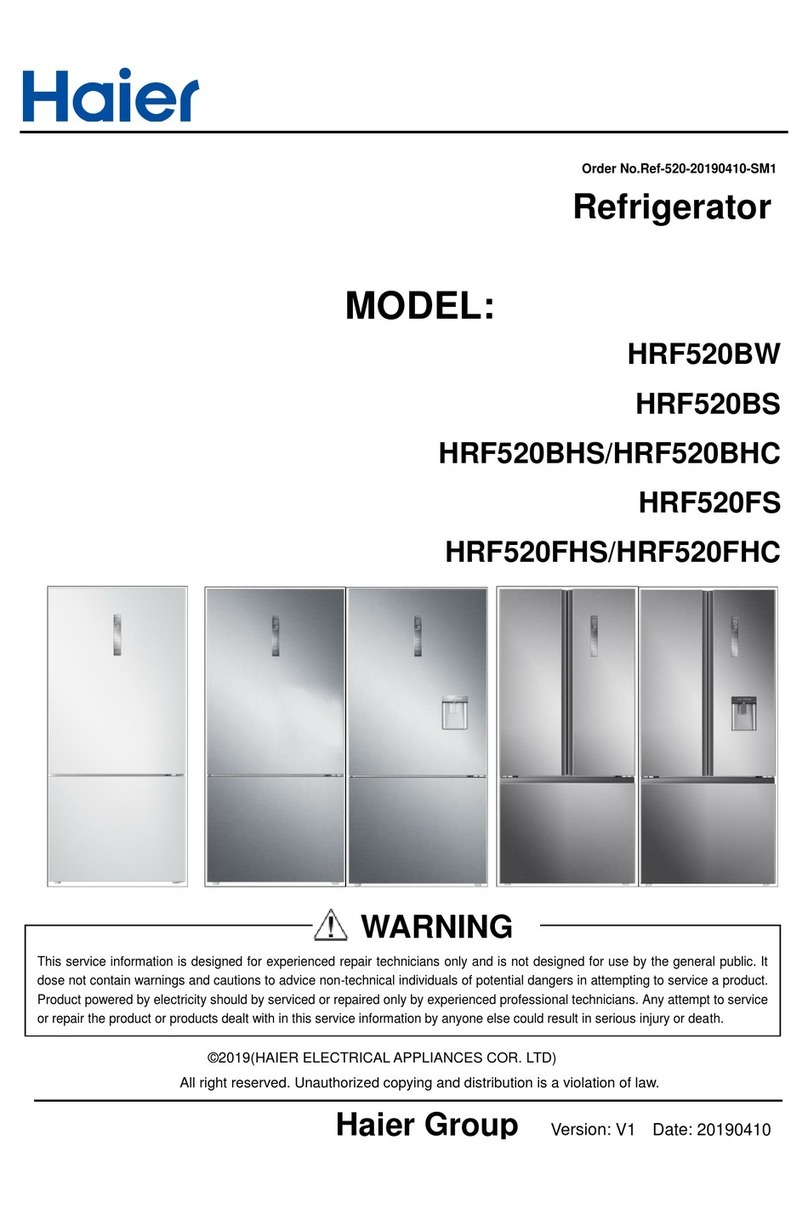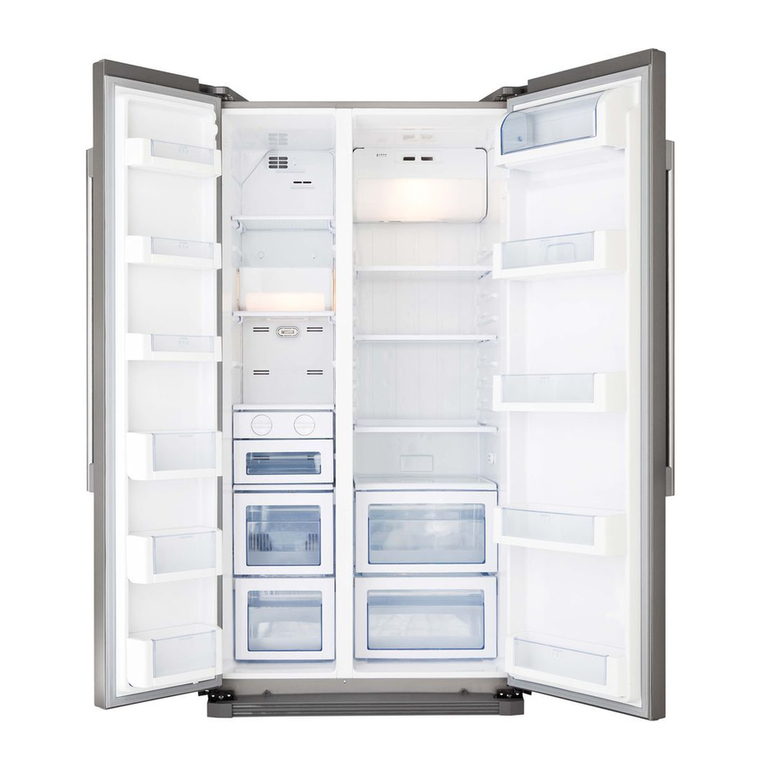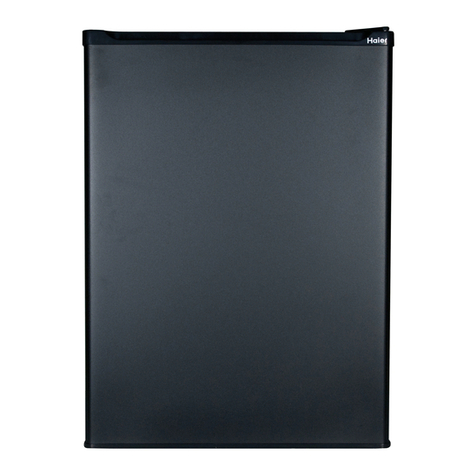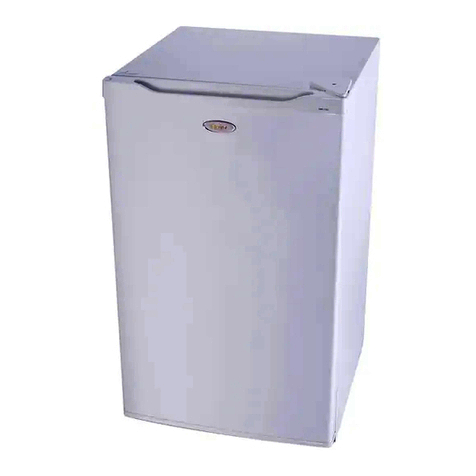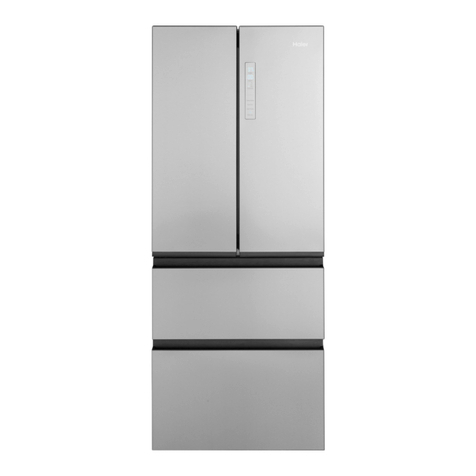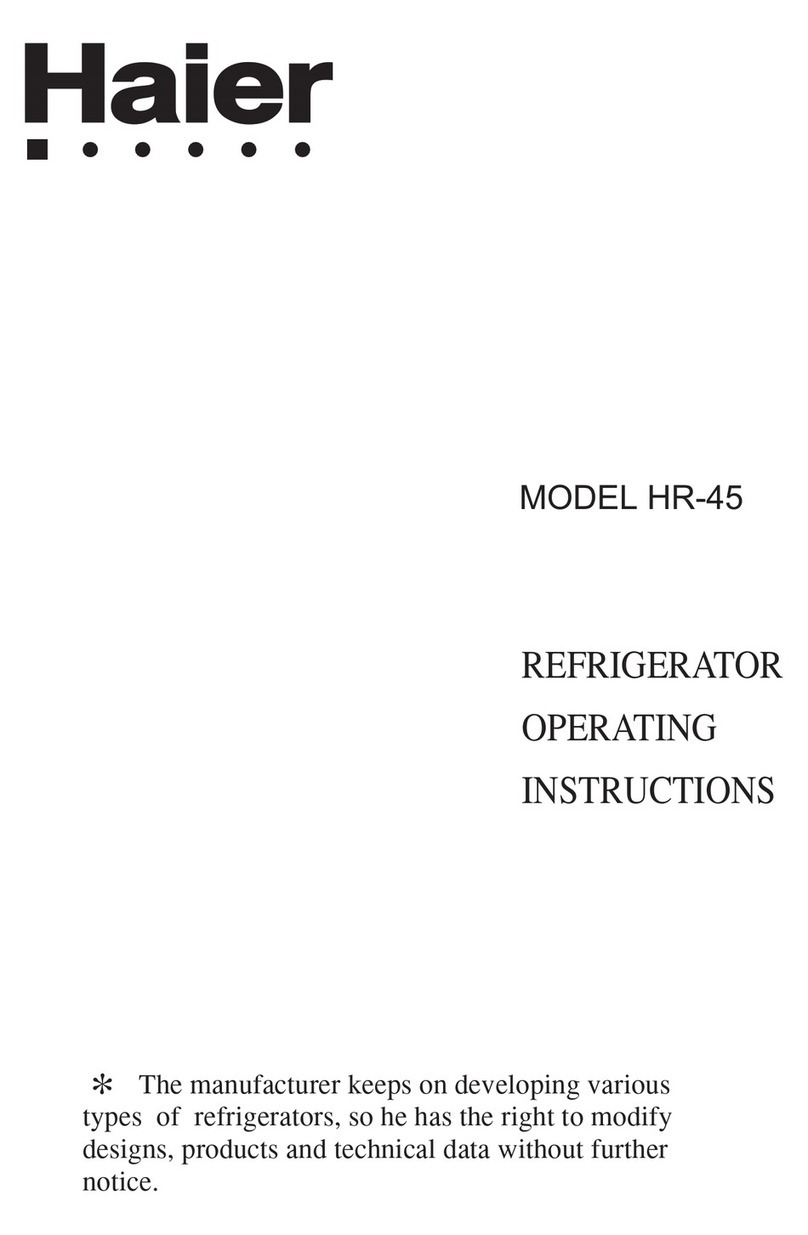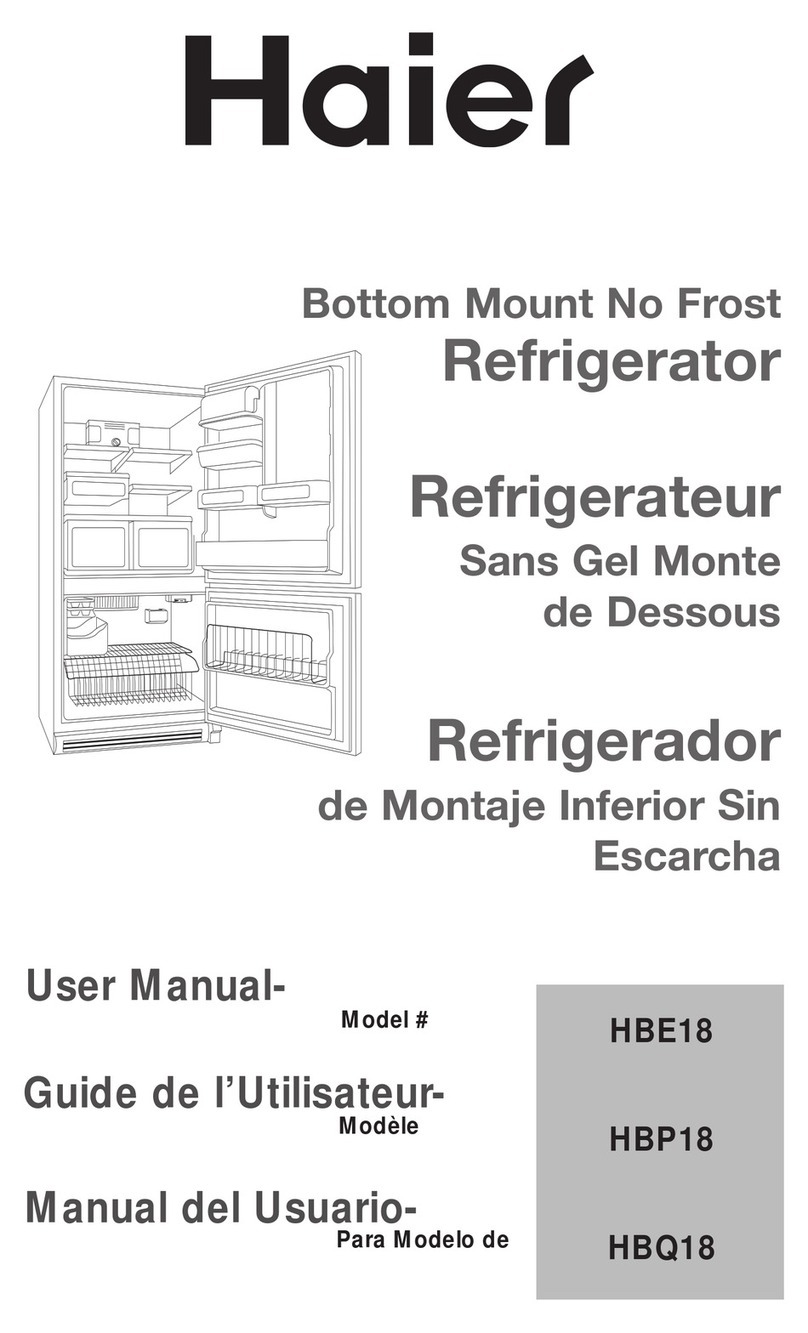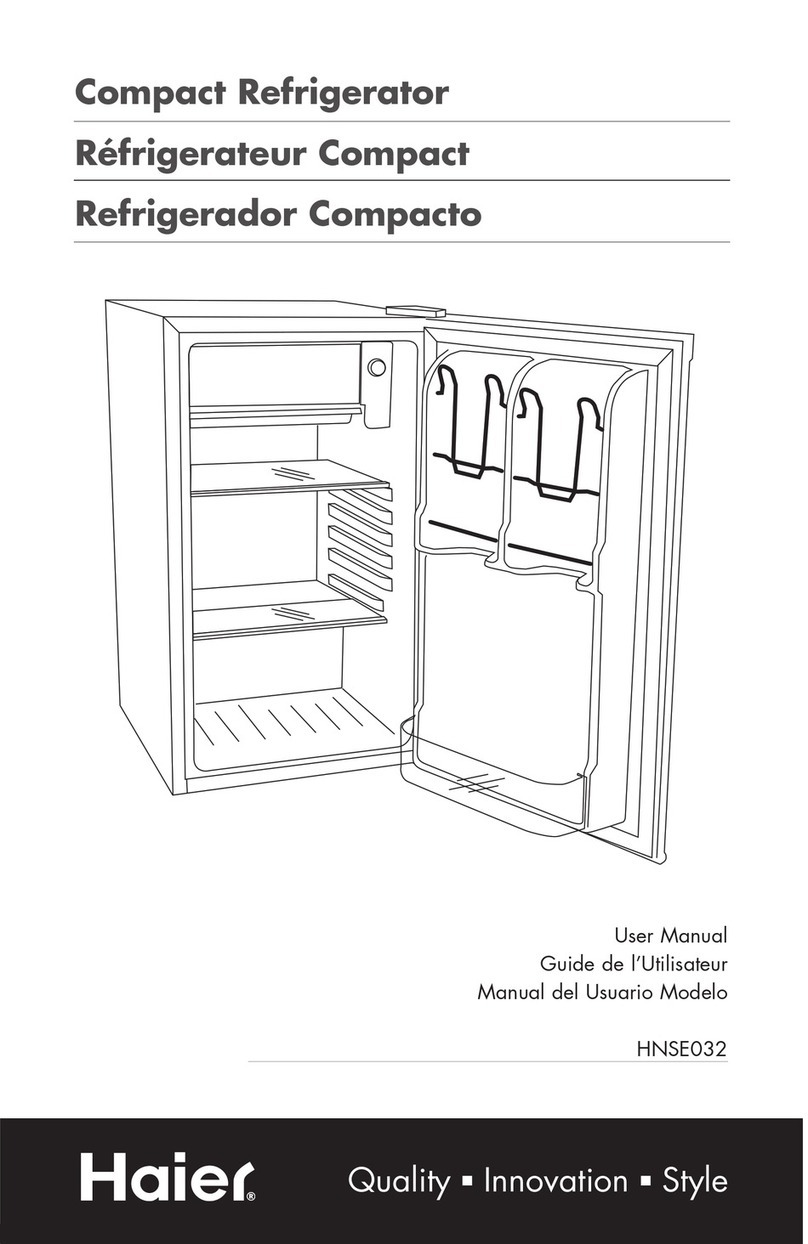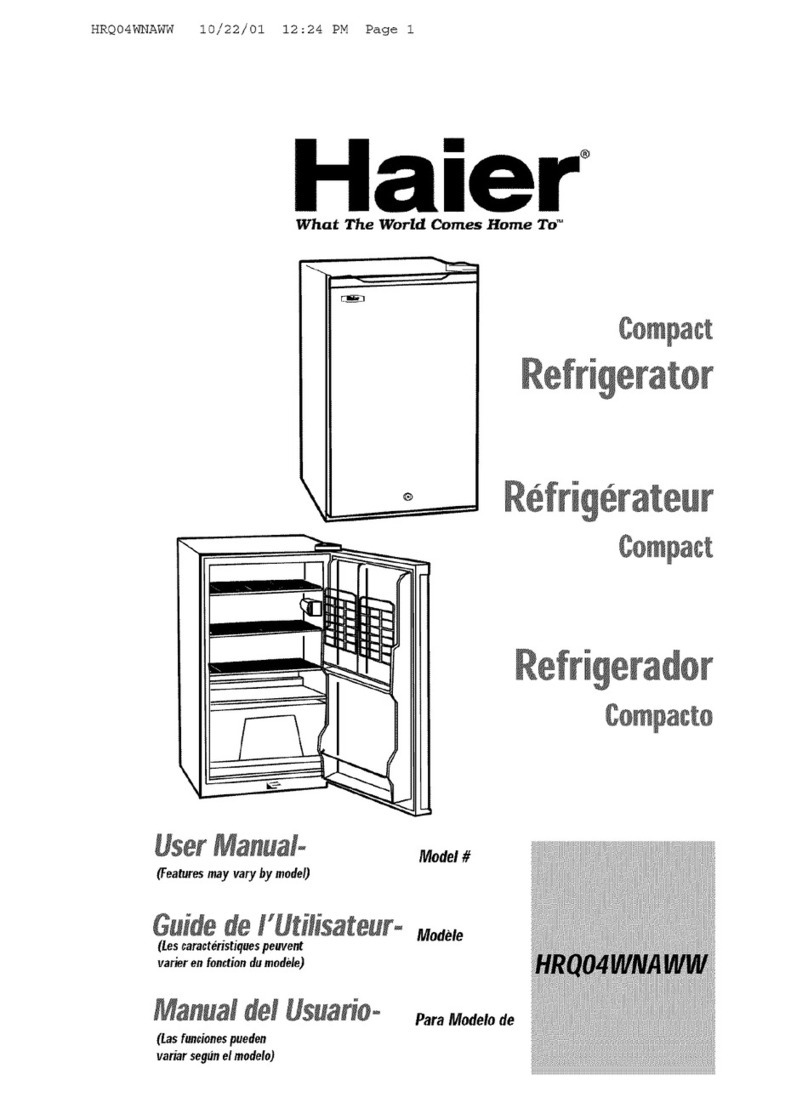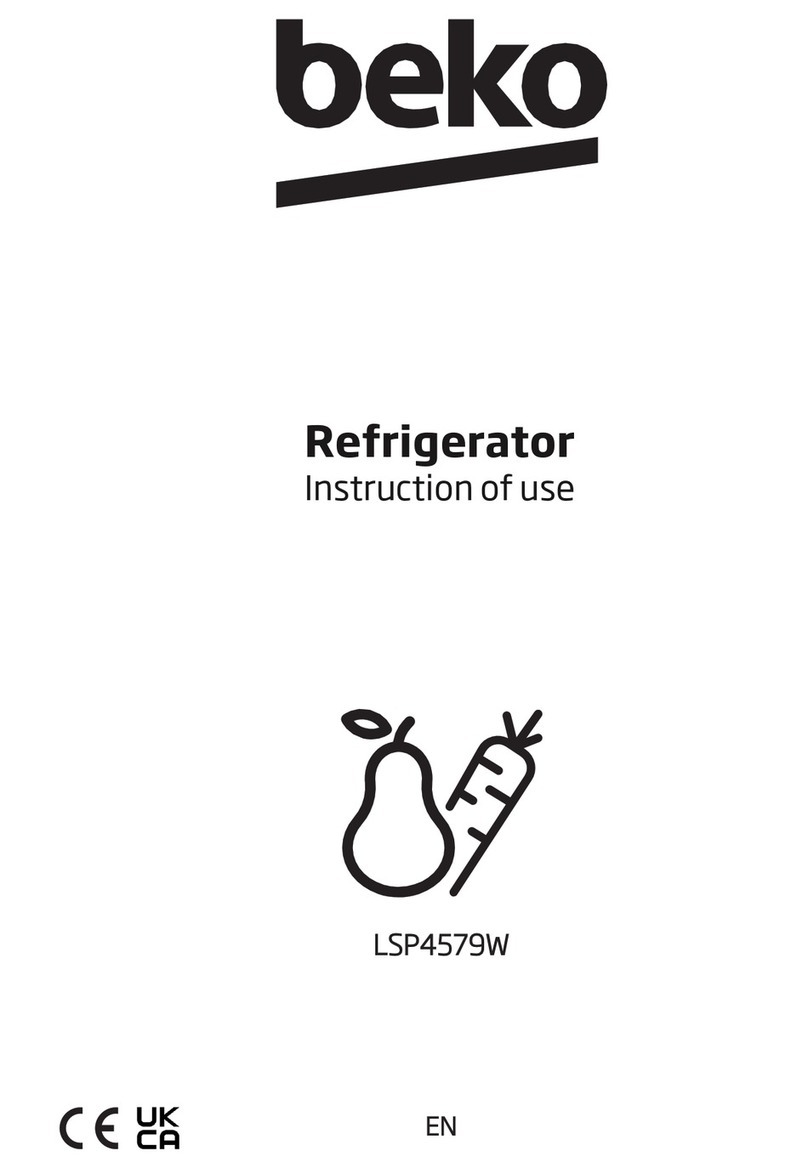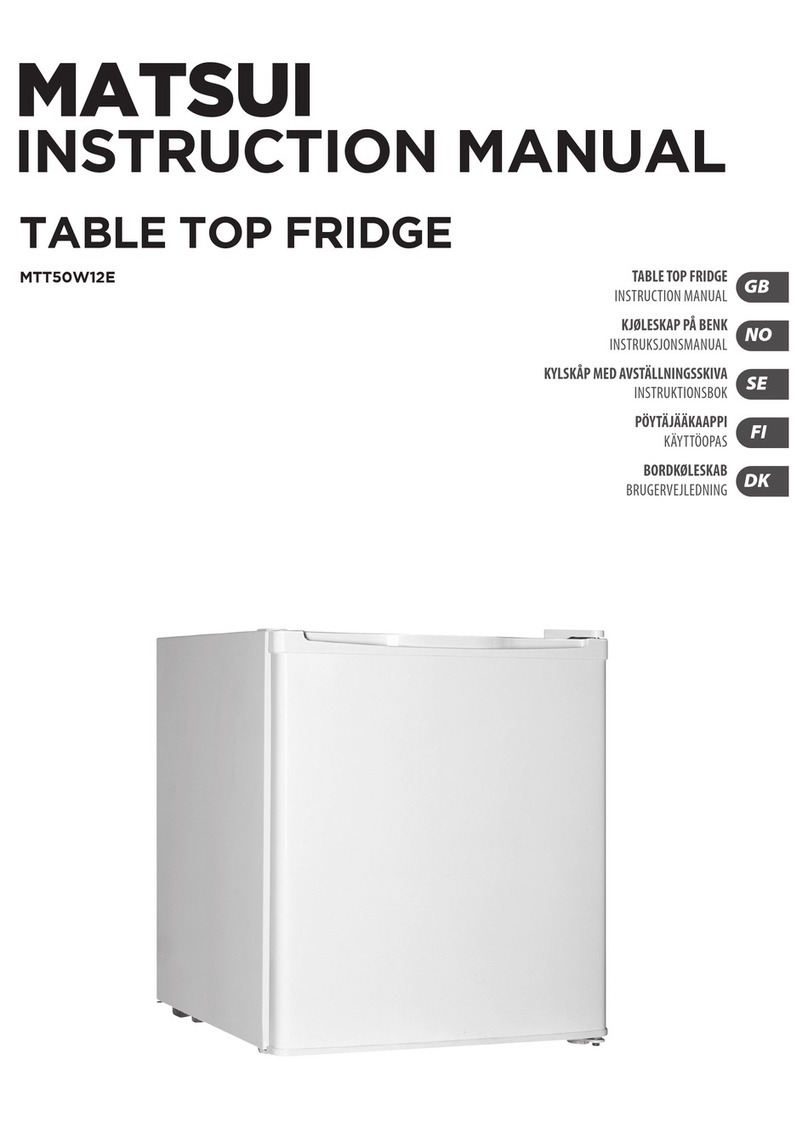
PROPER CARE AND MAINTENANCE
ENGLISH
WARNING
BEFORE CLEANING YOUR REFRIGERATOR,
ALWAYS UNPLUG IT FROM THE POWER
SOURCE. FAILURE TO HEED THIS WARNING
COULD RESULT IN INJURY OR DEATH FROM
ELECTRIC SHOCK.
NOTE: Before using any cleaning products, be sure to
read the manufacturer’s instructions and warnings.
This will help avoid personal injury or damage to
property.
INTERIOR CLEANING
Prepare a cleaning solution of 3-4 tablespoons of
baking soda mixed with warm water. Use a sponge or
soft cloth, dampened with the cleaning solution to
wipe the inside of your refrigerator.
Handle all glass parts with care at all times.
DO NOT USE WARM WATER TO CLEAN GLASS
SHELVES WHILE THEY ARE STILL COLD. GLASS MAY
BREAK WHEN EXPOSED TO SUDDEN TEMPERATURE
CHANGES OR IMPACT.
Do not attempt to wash any parts in a dishwasher.
Do not use harsh chemicals, ammonia, chlorine bleach,
concentrated detergent, solvents, abrasives or metal
scouring pads to clean your refrigerator, inside or out.
They can damage and/or discolor the refrigerator
finish.
EXTERIOR CLEANING
Use a clean, soft, lightly dampened cloth with kitchen
appliance wax or a mild detergent to clean the exterior
of the refrigerator.
Use a clean, soft, lightly dampened cloth with warm
soapy water to clean handles and trim. Use a clean, soft
towel to dry.
For stainless steel models, use a dry cloth and stainless
steel polish.
Door gaskets should be cleaned every three months
following the instructions for interior cleaning. Clean
gaskets will maintain a better seal than dirty gaskets.
Lightly apply petroleum jelly to the hinge side of the
gaskets to keep the gasket pliable and assure a good
seal.
Never use a dirty cloth to clean the exterior of the
refrigerator. Dirty cloths may leave residue on the
refrigerator that can damage the finish. Also, avoid the
use of harsh chemicals, ammonia, chlorine bleach,
concentrated detergent, solvents, abrasives or metal
scouring pads to clean the outside of the refrigerator.
LIGHT BULB REPLACEMENT
NOTE: If your refrigerator is equipped with LED lighting
blocks, these lights are designed to last for the life of
the refrigerator, however, if the lights stop operating,
please contact a certified technician for replacement.
BEFORE CHANGING A BULB, ALWAYS
UNPLUG UNIT FROM THE POWER SOURCE.
FAILURE TO HEED THIS WARNING COULD
RESULT IN INJURY OR DEATH FROM
ELECTRIC SHOCK.
INCANDESCENT LIGHT BULB REPLACEMENT GUIDE
Use the guide below to determine the appropriate bulb
for each fixture.
• Upper Refrigerator Light - 40 Watt Daylight
Appliance Bulb w/ medium base (1 or 2, depending
on model)
• Mid-Level Refrigerator Light - 25 Watt Appliance
Bulb w/ candelabra base
• Freezer Light - 25 Watt Appliance Bulb w/ candelabra
base
LED LIGHT BULB REPLACEMENT GUIDE
Use the guide below to determine the appropriate bulb
for each fixture.
• Upper Refrigerator Light - 5 Watt (or 40 Watt
Incandescent equivalent) LED Bulb with medium
base
• Mid-Level Refrigerator Light - 1.2 Watt (or 25 Watt
Incandescent equivalent) LED Bulb w/ candelabra
base
• Freezer Light - 1.2 Watt (or 25 Watt Incandescent
equivalent) LED Bulb w/ candelabra base
REPLACEMENT INSTRUCTIONS
1. In order to replace a light bulb, first unplug your
refrigerator from the power outlet.
2. After allowing the bulb to cool, turn bulb
counterclockwise in order to remove it from the
socket.
3. Screw a new bulb into the socket by turning the bulb
clockwise.
4. Plug in your refrigerator and open the door to check
that the bulb is working.
WARNING
PAGE 10 ●CLEANING & CARE
